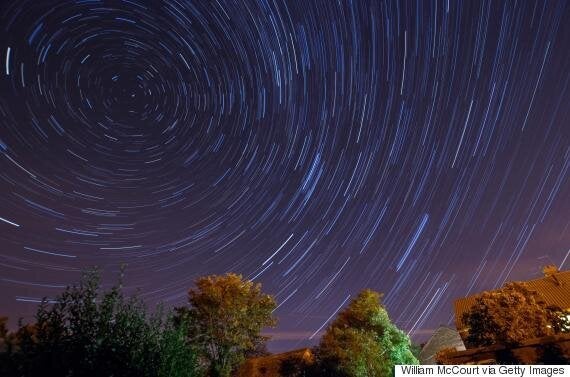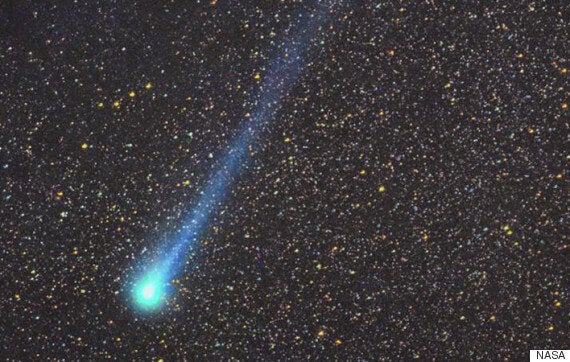The Perseids meteor shower takes place every year between late July and early August. As one of the brightest in the calendar it's easily your best chance of catching a shooting star.

The Perseids is one of the brightest meteor showers seen throughout the year.
This year however is set to be an extra special occasion as the Moon's position means the show will be even easier to see than before offering up a rare glimpse for everyone to see their first meteor shower.
The latest reports from the Met Office suggest that cloud cover could reduce the hope of seeing it for millions in the south of the country with those living in the Midland and the North most likely to catch a glimpse of the event.
If you don't get a chance to see it though don't panic, NASA will be giving intrepid star gazers in the UK a second chance by holding their own meteor shower lifestream which will take place on Thursday 12 August.
SEE ALSO:
- Meteor Strike Over Texas Creates Green Ball Of Fire, Ground Shakes
- Meteor Explodes Over Devon: Video And Pictures Of The 'Biggest UK Strike Ever'
- Meteor Strikes Nicaragua As Giant Asteroid Misses Earth
- Skydiver Almost Hit By Meteorite: Unbelievable Video Of Norwegian Anders Helstrup's Near Miss
- Moon Explosion: Massive Meteor Crashes Into The Moon As Nasa Watches
When Can I Watch The Perseids?
The Perseids will hit its peak starting the evening of Wednesday 12 August and will finish on Friday 14 August.
There will reportedly be a burst of activity at around 7.40PM BST however as we're in the peak of Summer it's unlikely that it'll be dark enough for us to see this.

Don't panic though, Professor Bailey goes on to say, "it is just possible that enhanced rates may persist for a few hours around this time and so be observable soon after dark."
Where Can I Watch The Perseids?
People living in the Midlands and the North will have the best view of the annual Perseid meteor shower which peaks this week, according to the latest predictions by the Met Office.
Cloud cover across southern England and Scotland throughout the week means lucky star-gazers in the northern countryside are expected to have the best views of the shower.
Providing your garden isn't in the centre of any major towns or cities, otherwise, while you might see some, the full show will sadly lose the majority of its impact.
There is good news however. The reason this year is particularly special is the Moon. While normally acting like a giant light bulb that sucks the joy out of everything the Moon is actually at its darkest phase.
Robin Scagell, vice-president of the Society for Popular Astronomy advises: "Its best to watch them from the countryside but even in town, these meteors are bright enough for a few to be visible."
"The moon is out of the way which makes a lot of difference because the sky will be much darker all night. For every bright shooting star you see, there are always fainter ones, and this will make it easier to see the fainter meteors and ring up the numbers."
Perseids Meteor Shower 2015 Livestream
If you completely miss the show tonight then NASA has come to the rescue.
It'll be live streaming its own view of the Perseids in the US from 03.00AM BST on Friday onwards along with expert analysis and hopefully some stunning views of the meteor shower from its headquarters in Houston, Texas.
So what makes the Perseids so special? Well you can thank the comet Swift-Tuttle which very conveniently swings by our solar system around once every 130 years or so.

Swift-Tuttle has a 'nucleus' of around 26km in diameter. For every 11 orbits of Jupiter, the
"If you see one meteor shower this year, make it August's Perseids or December's Geminids. The Perseids feature fast and bright meteors that frequently leave trains, and in 2015 there will be no moonlight to upstage the shower."
A meteor shower is most commonly caused by hundreds of comet fragments entering the Earth's atmosphere. As these large bodies of ice pass through the solar system the Sun's rays heat the comet causing large fragments to break off.
This rather handily has the side-effect of not only causing massive meteor showers but also ones that are entirely predictable.
READ MORE:
While you could always use binoculars the tiny shards are moving at a staggering 36 miles per second, so they'll be producing quite the light show when they hit the atmosphere.
Our advice? Find a local park, or even look and see if local astronomy groups are holding special viewing meetings. Head over with a flask, a comfy chair and then sit back and enjoy the show.